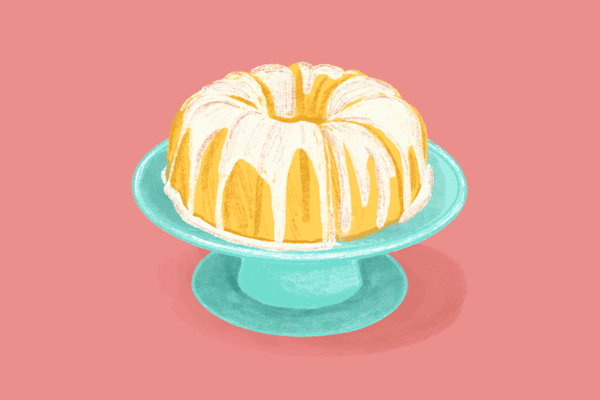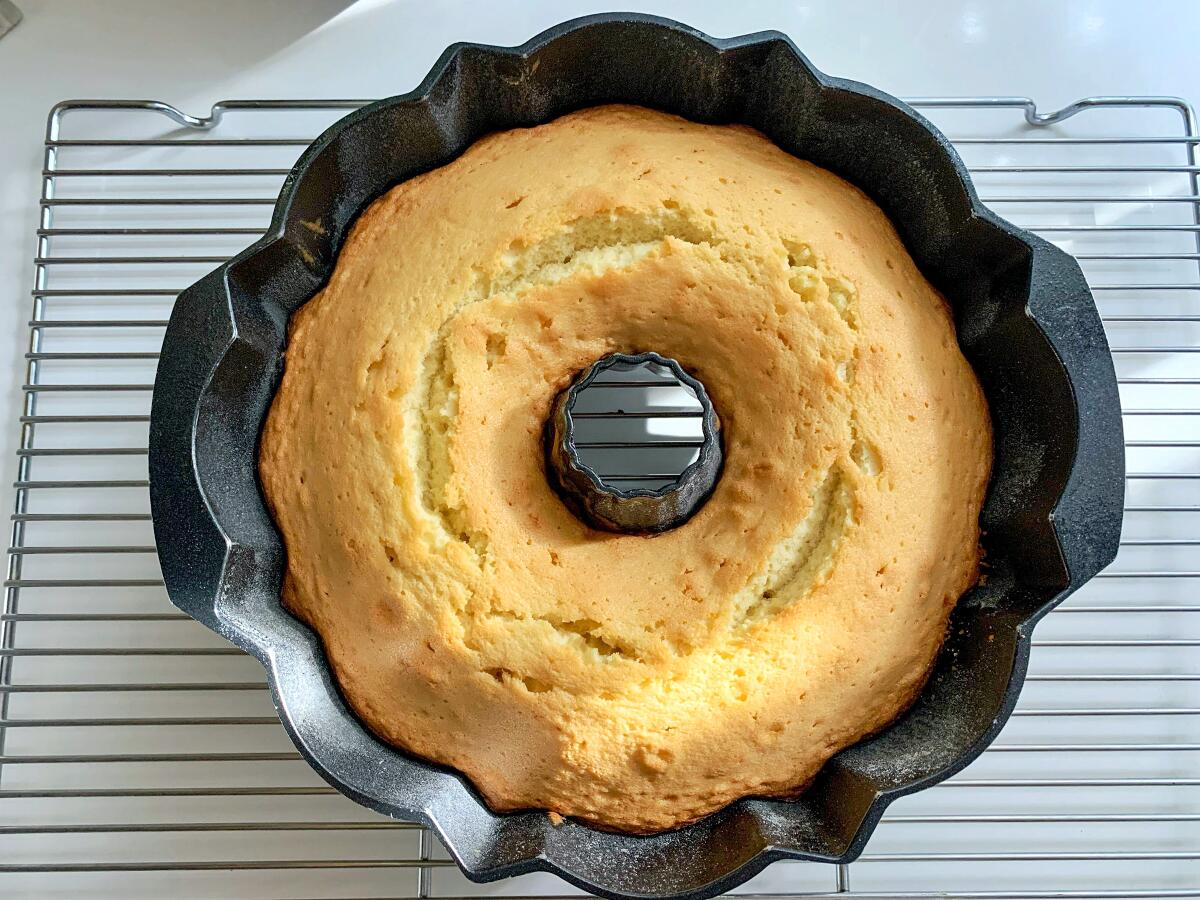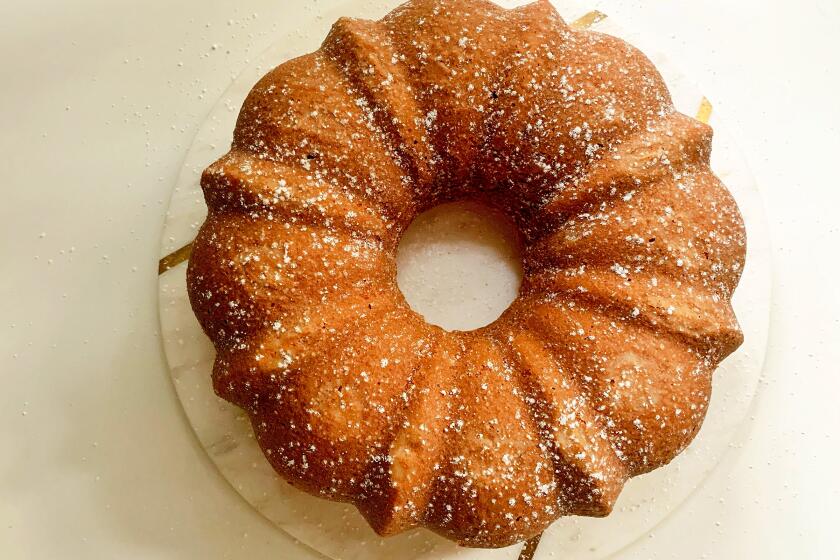This perfect pound cake goes back to basics

- Share via
With so many of you having to stay home and cook for the first time — ever or more than you have in a long time — we get that it can be overwhelming to have to cook all your meals from scratch. So we’re here to get you started. Each day we’re going to post a new skill here and go into detail about how to do it — a resource for cooking basics so you can get food on the table and get through this.
A series of simple tutorials for making some basic recipes at home.
Lesson 26: Classic Pound Cake
The secret here is that there is no secret: It’s the classic “pound” cake with equal weights of butter, sugar, eggs and flour. Back in the day of easy grocery runs and well-stocked kitchens, I tested dozens of pound cakes, most of which included the modern additions of milk, cream, cream cheese or sour cream. In a blind taste test, this tried-and-true formula consistently beat the rest.
Most baked goods taste best fresh out of the oven; pound cake tastes better over time. Its buttery egginess deepens in taste, its fine-crumb texture becomes smoother. It’s the sort of cake that slices easily, so you get to enjoy a thin sliver or thick wedge anytime. Sturdy and firm, it packs up nicely for front-door dropoffs, hospital deliveries and mailed packages.
Pound cakes are a great gift to let somebody know how much you miss them, to express gratitude for those serving society or to cheer up a friend who’s feeling down.
Classic Pound Cake
The only alteration I’ve made to the classic recipe is to dial up the salt. I use a lot of vanilla because it perfumes the cake without overpowering, but if you’re not a fan of vanilla, you can try other extracts, such as almond, rum, coffee, lemon, orange or a combination.
The technique is dead easy: You can’t go wrong, but you can aim for the ideal. Start by bringing your butter and eggs to room temperature; ingredients bind together better when they’re the same temperature. The butter shouldn’t be soft or greasy but pliable enough to indent if you press it.
This fine-textured cake should be dense but also light, a paradox that makes sense once you take a bite. You achieve it by beating the butter and sugar to their airiest possible state. The mixture will be nearly white and very fluffy. I recommend an electric mixer unless you want a workout.
While beating, you then slowly pour in the eggs bit by bit, letting each addition fully blend into the mix before adding the next. If you rush it, the batter will break and separate into clumps. As soon as all the egg is incorporated, stop mixing. Overbeating the batter once the eggs are in results in tunneling, those holes you see running through otherwise picture-perfect cakes. Finally, the flour should be mixed in gradually on low speed or by hand to ward off toughness in the finished product.

A loaf pan works fine for this batter but the edges tend to be drier than the center. A Bundt or other tube pan ensures more even baking. Whatever pan you’re using, be sure to grease and flour it well first. If the cake does end up sticking, it’s OK. Just save whatever pieces came out whole (and eat the stuck scraps), trim off their raggedy edges and wrap them up to gift. The real joy in this cake is sharing it with others.
More to Read
Eat your way across L.A.
Get our weekly Tasting Notes newsletter for reviews, news and more.
You may occasionally receive promotional content from the Los Angeles Times.











